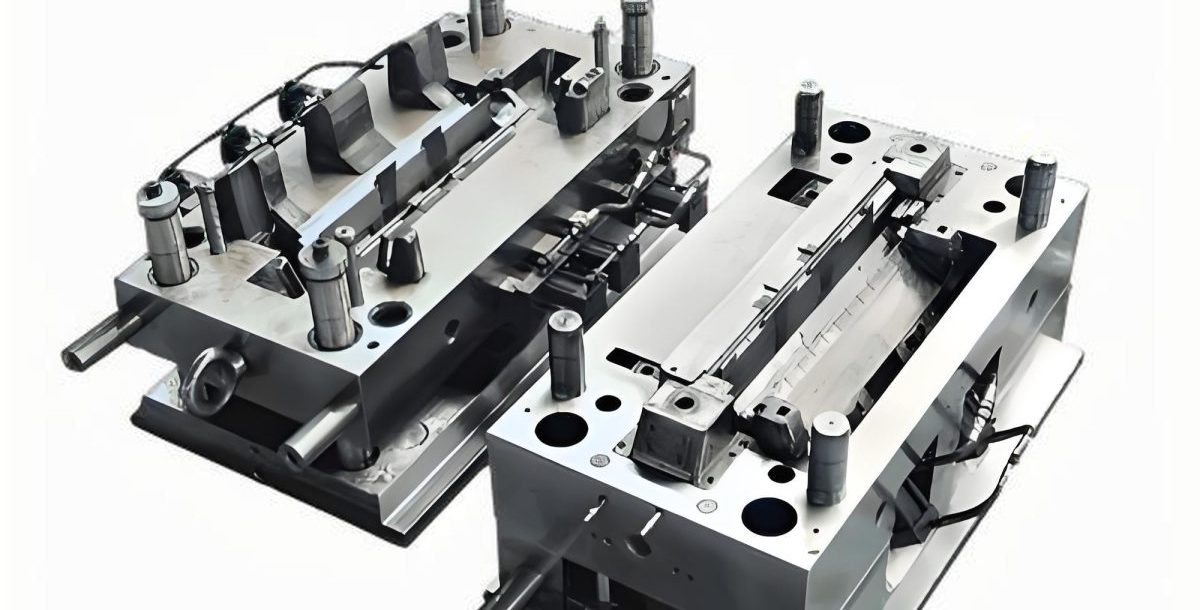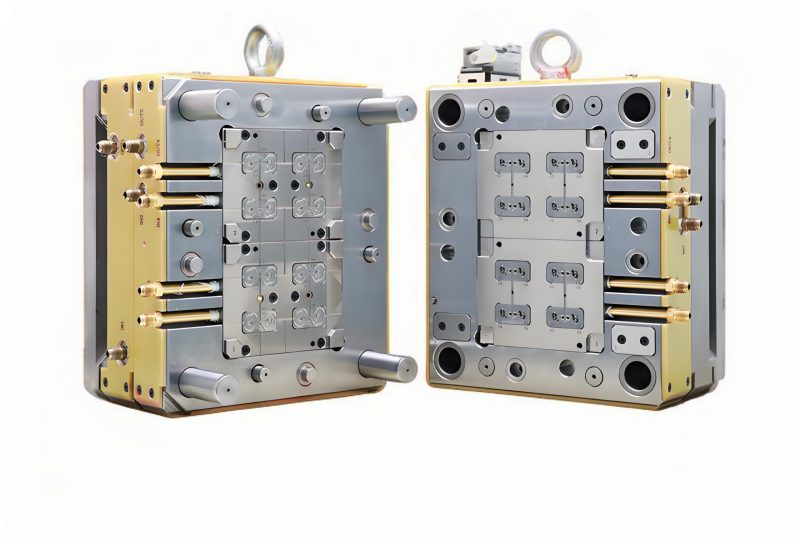
SPI-SPE Injection Molds Classification
A comprehensive guide to the industry-standard classification system for injection molds used worldwide
Understanding Injection Molds Classification
Different types of injection molds have varying requirements for design drawings and mold steels. While China has not yet established an official classification system for injection molds, the SPI-SPE (Society of the Plastics Industry-Society of Plastics Engineers) standards from the United States are widely recognized and adopted globally.
These classification standards for injection molds are primarily based on expected production lifespan, which directly influences material selection, manufacturing precision, and design requirements. Understanding these classifications is crucial for manufacturers, engineers, and buyers when specifying or evaluating injection molds for different production needs.
The following classification system provides clear guidelines for injection molds, ensuring that the right type of mold is selected for each production scenario based on expected usage and precision requirements.
Injection Molds Classification Overview
Class 101
≥1,000,000 cyclesLong-life precision injection molds designed for mass production with the highest durability requirements.
- Full hardened components
- IT5 precision standards
- Comprehensive cooling systems
Class 102
500K-1M cyclesHigh-volume production injection molds offering excellent durability for medium to large production runs.
- Hardened critical components
- IT6 precision standards
- Optional enhanced features
Class 103
100K-500K cyclesMedium-volume injection molds balancing durability and cost-effectiveness for moderate production runs.
- Pre-hardened steels
- IT7 precision standards
- Basic cooling systems
Class 104
500-100K cyclesLow-volume production injection molds designed for prototyping or short production runs.
- Variety of material options
- IT7-IT8 precision standards
- Simplified design features

Class 101 Injection Molds
According to SPI-SPE standards, Class 101 injection molds are designed for a production lifespan of 1,000,000 cycles or more, making them long-life precision injection molds suitable for the most demanding production requirements.
Design Documentation Requirements
Class 101 injection molds require detailed mold assembly drawings and component drawings. These documents must include comprehensive specifications for all aspects of the mold design, ensuring precise manufacturing and assembly.
Mold Base Material Specifications
The mold base material for Class 101 injection molds must have a minimum hardness of 280BHN, typically utilizing DME #2 steel or 4140 steel. This ensures the structural integrity of the mold during extended production runs.
Cavity and Component Requirements
For Class 101 injection molds, cavity inserts must be hardened to 48–50HRC. Other components such as slides, wedges, and pressure blocks must also be hardened. The primary dimensional accuracy grade for成型零件 is IT5, representing the highest precision standard for injection molds.
Additional Requirements
- Ejector plates must be equipped with guide pillars
- Slides must incorporate wear-resistant blocks
- Where necessary, fixed mold, moving mold, and slides must have temperature control systems
- All cooling channels should use electroless nickel plating or 420 stainless steel inserts to prevent rust and facilitate cleaning
- Straight body positioning blocks or tapered positioning blocks are required
Class 102 Injection Molds
Class 102 injection molds are designed for a production lifespan ranging from 500,000 to 1,000,000 cycles, making them suitable for high-volume production runs where exceptional durability is required but the highest precision standards of Class 101 may not be necessary.
Design Documentation Requirements
Similar to Class 101, Class 102 injection molds require detailed mold assembly drawings and component drawings to ensure proper manufacturing and performance throughout their extended service life.
Mold Base Material Specifications
Class 102 injection molds require a mold base material with a minimum hardness of 280BHN, typically utilizing DME #2 steel or 4140 steel, ensuring robust performance during high-volume production cycles.
Cavity and Component Requirements
For Class 102 injection molds, cavity inserts must be hardened to 48–52HRC, with other important components receiving similar treatment. The primary dimensional accuracy grade for成型零件 is IT6, ensuring high precision suitable for most mass-produced components.
Additional Requirements
Class 102 injection molds should utilize straight body positioning blocks or tapered positioning blocks. The following items may or may not be required depending on the final production quantity, and should be carefully evaluated during the quoting process:
- Ejector plate guide pillars
- Slide wear-resistant blocks
- Electroplated cooling water holes and electroplated cavities
Class 103 Injection Molds
Class 103 injection molds are designed for a production lifespan ranging from 100,000 to 500,000 cycles, making them suitable for medium-volume production runs where a balance between durability, precision, and cost-effectiveness is required.
Design Documentation Requirements
Class 103 injection molds require detailed mold assembly drawings to ensure proper construction and performance, though the level of detail may be somewhat less extensive than required for Class 101 and 102 injection molds.
Mold Base Material Specifications
The mold base material for Class 103 injection molds must have a minimum hardness of 165BHN, typically utilizing DME #1 steel or 1040 steel. This provides adequate durability for medium-volume production without the higher material costs associated with Class 101 and 102 injection molds.
Cavity and Component Requirements
For Class 103 injection molds, cavity inserts are typically made from P20 steel hardened to 28–32HRC or high-hardness steel hardened to 36–38HRC. The primary dimensional accuracy grade for成型零件 is IT7, providing good precision suitable for most medium-volume production applications.
Additional Requirements
Other requirements for Class 103 injection molds are determined based on specific application needs. This flexibility allows manufacturers to optimize the design of these injection molds for particular production requirements while maintaining cost-effectiveness.
Cooling systems in Class 103 injection molds are typically less complex than those in higher classes but still adequate for maintaining consistent production quality over the expected lifespan.
Class 104 Injection Molds
Class 104 injection molds are designed for a production lifespan ranging from 500 to 100,000 cycles, making them suitable for small-batch production runs, prototyping, or specialized applications where high-volume production is not required.
Design Documentation Requirements
Class 104 injection molds require basic mold structure drawings to guide manufacturing. These drawings are less detailed than those for higher classes, reflecting the simpler design requirements and shorter expected service life of these injection molds.
Mold Base Material Specifications
Class 104 injection molds typically use P20 steel hardened to 28–32HRC for mold bases, though softer steels (below 40HRC) or even aluminum may be used depending on the specific application. This flexibility in material selection allows for more cost-effective production of these injection molds.
Cavity and Component Requirements
For Class 104 injection molds, cavity inserts can be made from aluminum, soft steel, or other common metals depending on the application requirements. The primary dimensional accuracy grade for成型零件 ranges from IT7 to IT8, providing adequate precision for most low-volume production needs.
Additional Requirements
Other requirements for Class 104 injection molds are determined based on specific needs, allowing for significant design flexibility. Cooling systems, if present, are typically simple in design, and many specialized features found in higher-class injection molds are omitted to reduce costs.
These injection molds are often used for product development, market testing, or specialized production runs where the higher costs of longer-lasting injection molds cannot be justified.
Injection Molds Classification Comparison
| Specification | Class 101 | Class 102 | Class 103 | Class 104 |
|---|---|---|---|---|
| Production Lifespan | ≥1,000,000 cycles | 500,000-1,000,000 cycles | 100,000-500,000 cycles | 500-100,000 cycles |
| Mold Base Hardness | 280BHN minimum | 280BHN minimum | 165BHN minimum | Variable (often P20 or softer) |
| Cavity Insert Hardness | 48-50HRC | 48-52HRC | 28-38HRC | Variable (often unhardened) |
| Dimensional Accuracy | IT5 | IT6 | IT7 | IT7-IT8 |
| Documentation | Detailed assembly and part drawings | Detailed assembly and part drawings | Detailed assembly drawings | Basic mold structure drawings |
| Typical Applications | High-volume, precision components | Large production runs | Medium production volumes | Prototyping, small batches |
Choosing the Right Injection Molds
Understanding the SPI-SPE classification system is essential for selecting the appropriate injection molds for your specific production requirements. By matching the mold class to your expected production volume, precision needs, and budget constraints, you can optimize both performance and cost-effectiveness in your manufacturing processes.
Whether you require the long-life precision of Class 101 injection molds for mass production or the flexibility of Class 104 injection molds for prototyping, this classification system provides a valuable framework for specifying and evaluating injection molds across a wide range of applications.
Learn more